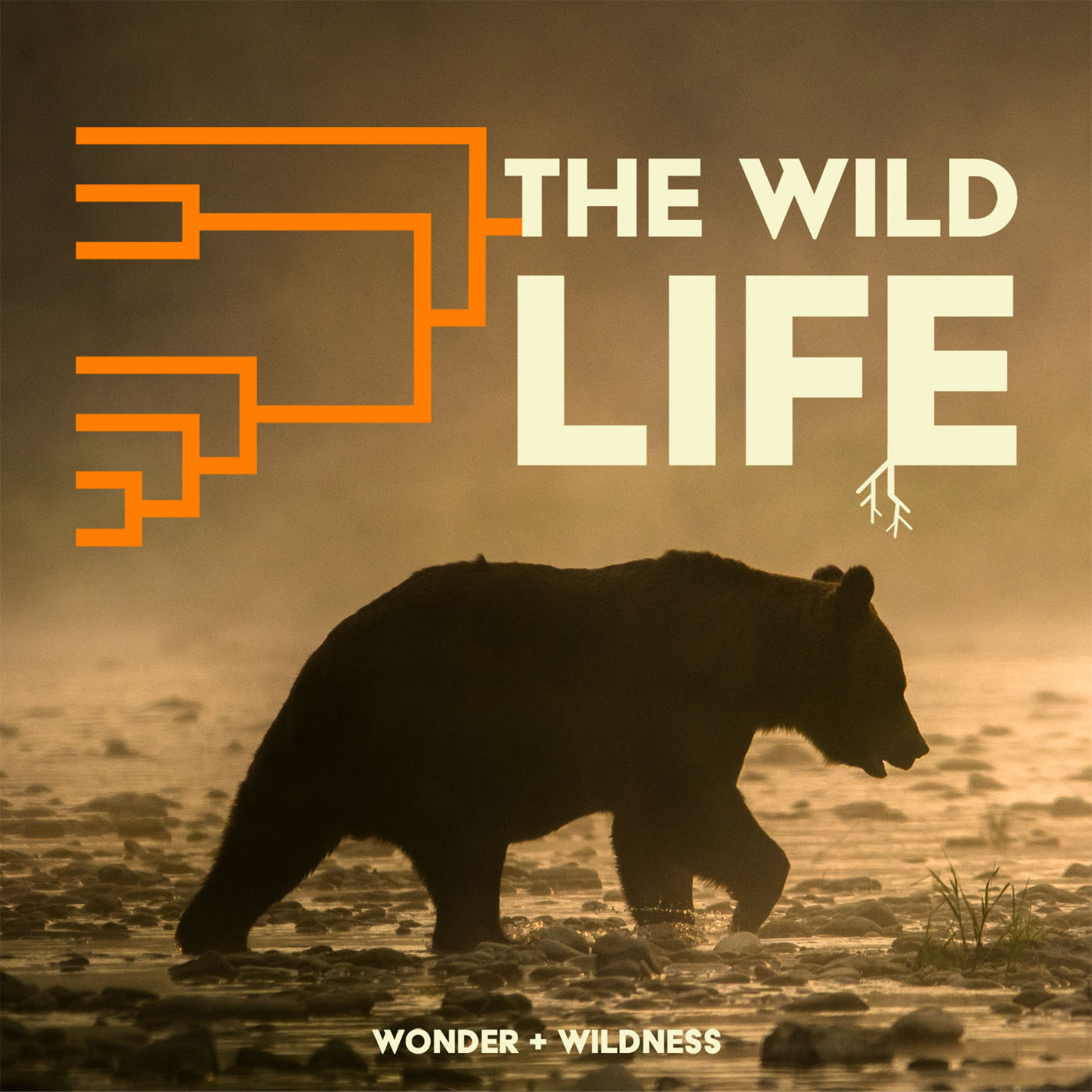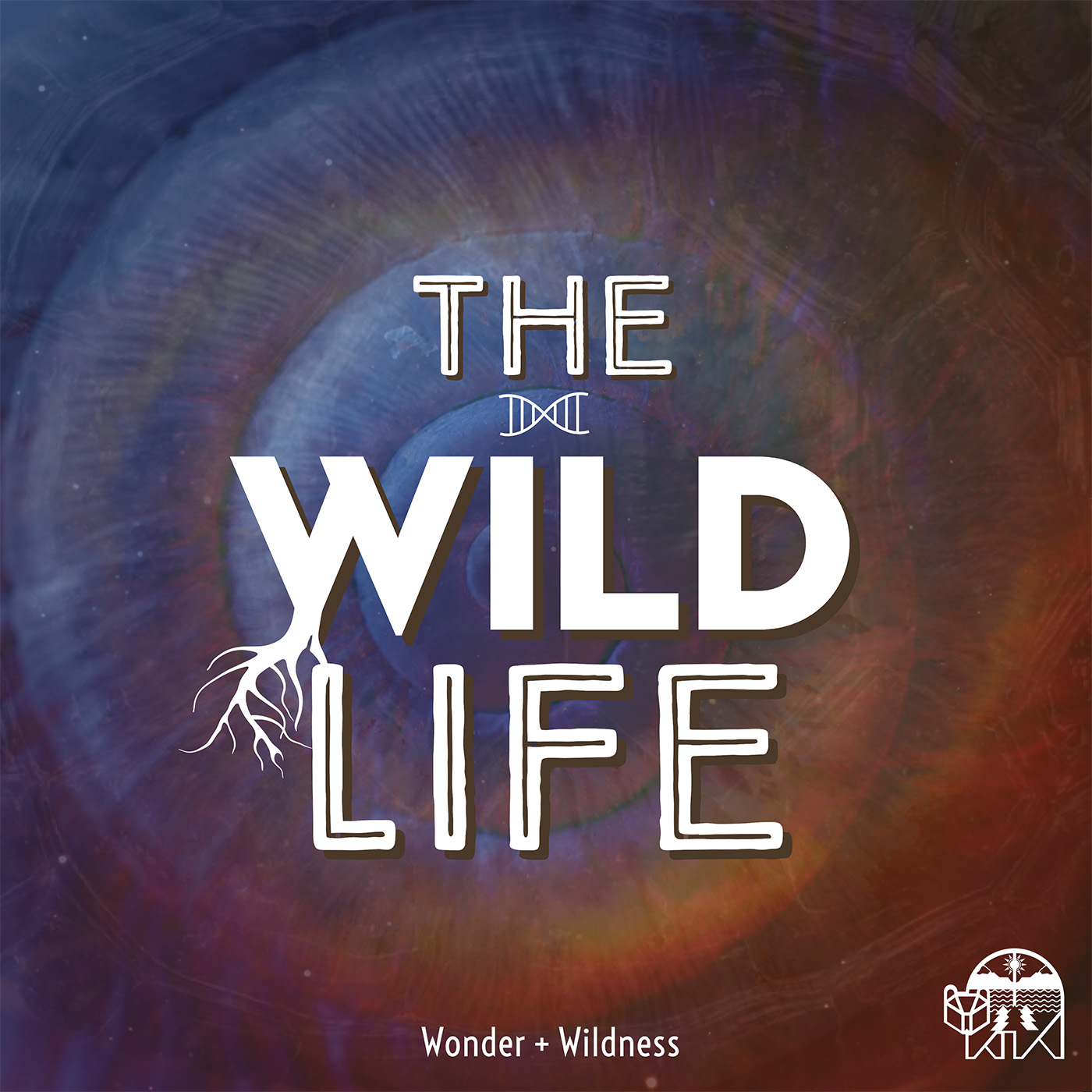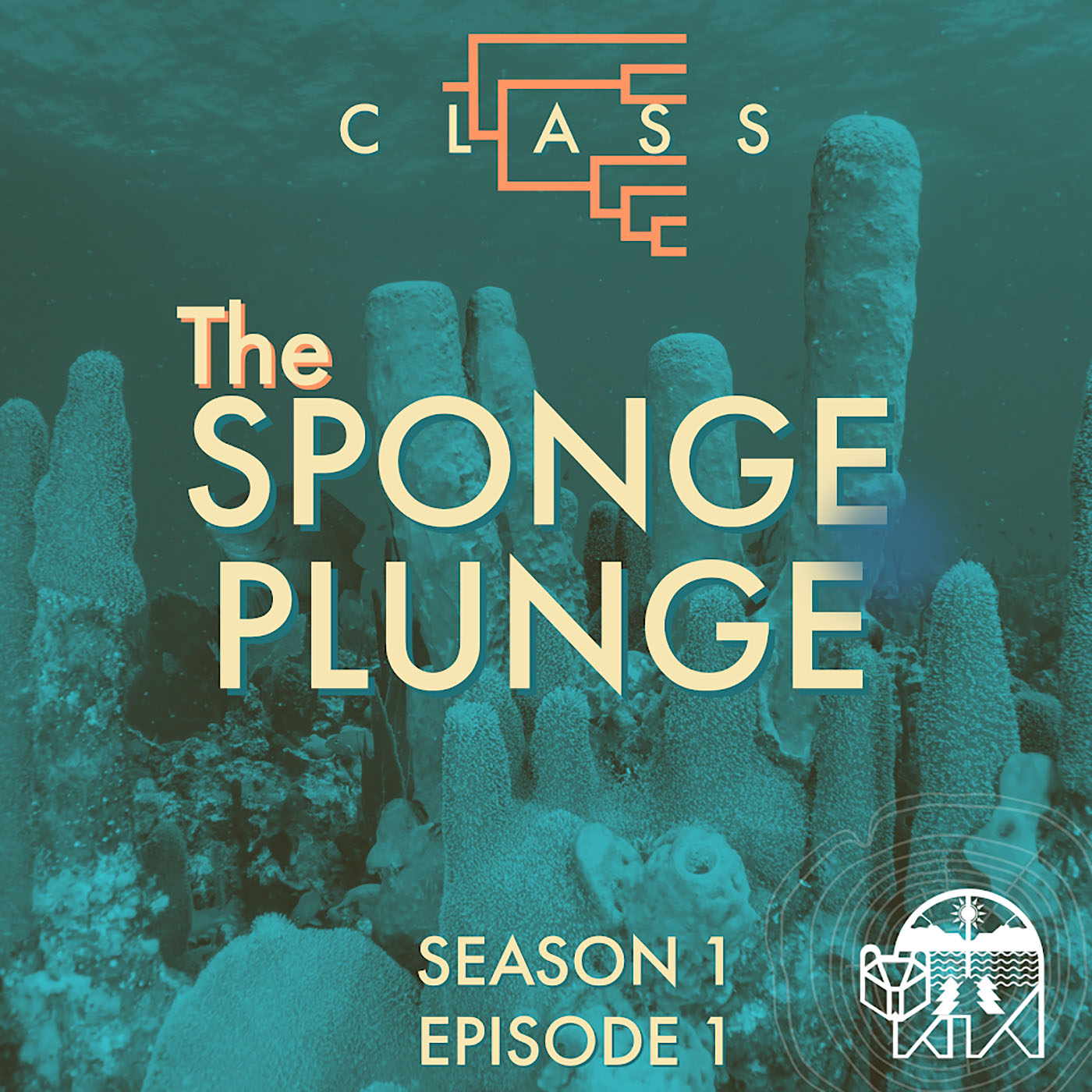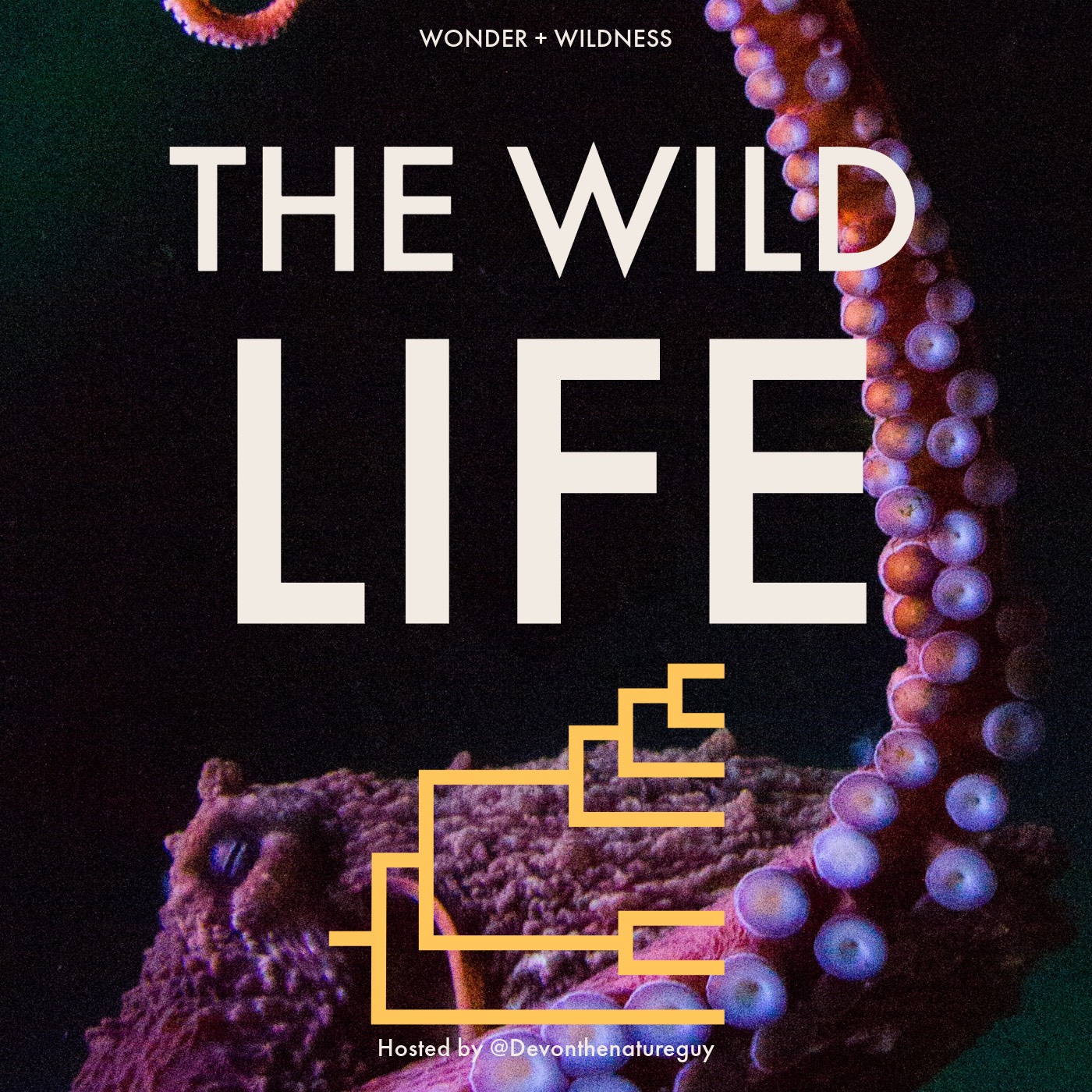191 episodes


From their three hearts to their ability to transform and communicate, discover the extraordinary world of octopuses with host Devon Bowker and special guest Sy Montgomery, the "octopus whisperer" herself, and octopus expert Warren Carlyle, founder of OctoNation®. In a new adventure, Secrets of the Octopus, they dive deep into the secrets of the ocean's most enigmatic creatures, exploring the latest revelations in octopus research and conservation efforts. With captivating storytelling and stunning visuals, the pair uncover why these creatures are worthy of our admiration and protection. Secrets of the Octopus | Book https://www.penguinrandomhouse.com/books/739429/secrets-of-the-octopus-by-sy-montgomery/ TRAILER| Secrets of the Octopus on National Geographic and Disney+ https://www.youtube.com/watch?v=SxOHYy1w92c OctoNation https://octonation.com/ Support the Show https://www.patreon.com/thewildlife Contact | hello@thewildlife.blog Follow Devon on TikTok https://www.tiktok.com/@devonthenatureguy?lang=en and Instagram https://www.instagram.com/devonthenatureguy/ Follow Sy Montgomery https://www.instagram.com/sytheauthor/ Follow Warren Carlyle https://www.instagram.com/octowarren/?hl=en


In this episode, Devon (@devonthenatureguy) sits down with Lauren Jackson (@lauren.queenofthewild on Instagram and HERp_trap_queen on TikTok) to chat about becoming a wildlife tech, woodpeckers, federal jobs, the friction of private land, scicomm and education, battles big and small, and above all else, love for the world around us. Support the show at www.patreon.com/thewildlife for as little as $1 per month


Today’s episode, social media SciComm, all things cephalopod, their super cool brains, their mind-blowing camouflage, RNA editing, peculiar romances, underappreciated "living fossils", and why octopuses are most definitely not aliens. All with special guest Meg Mindlin, Octopus Biologist Meg's Website https://www.megmindlin.com/ Save the Ocean, Save the World Hoodie https://www.megmindlin.com/shop/p/decapod-hoodie-pre-order Meg's Sticker Club https://www.patreon.com/MegMindlinArt Support The Wild Life https://www.patreon.com/thewildlife


In this episode, I sit down with Eric Eaton, author of Insectpedia: a Brief Compendium of Insect Lore https://press.princeton.edu/books/hardcover/9780691210346/insectpedia, Wasps: The Astonishing Diversity of a Misunderstood Insect https://press.princeton.edu/books/hardcover/9780691211428/wasps, and more! Wasps are far more diverse than the familiar yellowjackets and hornets that harass picnickers and build nests under the eaves of our homes. These amazing, mostly solitary creatures thrive in nearly every habitat on Earth, and their influence on our lives is overwhelmingly beneficial. Wasps are agents of pest control in agriculture and gardens. They are subjects of study in medicine, engineering, and other important fields. Wasps pollinate flowers, engage in symbiotic relationships with other organisms, and create architectural masterpieces in the form of their nests. From minute fairyflies to gargantuan tarantula hawks, wasps exploit almost every niche on the planet. So successful are they at survival that other organisms emulate their appearance and behavior. The sting is the least reason to respect wasps and, as you will see, no reason to loathe them, either. Find Eric on Twitter/X https://twitter.com/BugEric Check out Eric's Blog https://bugeric.blogspot.com/p/about-me.html Support the Show https://www.patreon.con/thewildlife Find me on Instagram https://Instagram.com/devonthenatureguy and TikTok https://www.tiktok.com/@devonthenatureguy?lang=en @devonthenatureguy Contact: hello@thewildlife.blog


This episode, which originally aired on March 24 2018, takes us all the way from Copenhagen to the rainforest of South America, from the belly of the beast to its excrement, as we explore nature’s Vampires. Our guest is Dr Marie Lisandra Zepeda Mendoza, who had recently finished her postdoc in Copenhagen, Denmark and whose recently published research on vampire bats and how they survive on such a peculiar diet is at the center of this story. If you'd like to support the creation of this show, the blog, and my science communication efforts on social media, you can do so for as little as $1 per month at www.patreon.com/thewildlife https://www.patreon.com/thewildlife


Sharks are in the water. But is the ocean shark-infested, or shark-depleted? I sat down to talk with Dr Alexandra McInturf to find out. Learn more about Alexandra and her work https://alexandramcinturf.squarespace.com/ PAPERS REFERENCED: Half a Century of Global Decline in Sharks and Rays https://www.nature.com/articles/s41586-020-03173-9 Half a century of rising extinction risk of coral reef sharks and rays https://www.nature.com/articles/s41467-022-35091-x Global catches, exploitation rates, and rebuilding options for sharks https://www.sciencedirect.com/science/article/abs/pii/S0308597X13000055 BYCATCH SOLUTIONS NOAA Link https://www.fisheries.noaa.gov/feature-story/modifying-fishing-gear-reduces-shark-bycatch-pacific


Another stroll down memory lane as I revisit the second-ever guest episode of The Wild Life, Myth-Understood: Busting Bat Myths and Mistruths with Liz Dengate from March 6th of 2018. If you'd like to support the creation of this show, the blog, and my science communication efforts on social media, you can do so for as little as $1 per month at www.patreon.com/thewildlife https://www.patreon.com/thewildlife This week we focus on an animal that has been the victim of superstition and fear for thousands of years. Despite what many believe, these creatures are extremely important to our everyday lives.


This was the first ever episode of The Wild Life back in 2017, and it was never supposed to happen. That's right, The Wild Life, as a podcast, was an accident. The result of a series of unfortunate events. But that's life, isn't it? It happens in the most unexpected of ways. I never imagined that this is where I would be today, and I'm so incredibly grateful for the experience and all those who have been a part of it, as guests, as listeners, and as people who believed in the work I was doing and helped me to succeed. The mystery of zebra stripes has long been a subject of debate, at least since the days of Charles Darwin and Alfred Russell Wallace. Now, thanks to Dr. Tim Caro, a professor of wildlife biology at the University of California-Davis, we finally have our answer. Next week, we're exploring Shark Conservation with Alexandra McInturf! If you'd like to support the creation of this show, the blog, and my science communication efforts on social media, you can do so for as little as $1 per month at www.patreon.com/thewildlife https://www.patreon.com/thewildlife Peace out, rainbow trouts!


It's been awhile. I think it's time for some reintroductions. I've spent a lot of time over the past year, 6 years really, reflecting on the journey so far, the ups and downs, the struggles, the wins, the change (oh, so much change), and I think I've finally landed comfortably with where I am and what I want this to be. I look forward to sharing my work and the perspectives of scientists from around the world with you every Wednesday as we explore the natural world, the dizzying amount of connections we share to it and each other, and find the courage to protect this planet we call home. If you managed to get through all 25-ish minutes, thank you so much for your time. The release schedule for the remainder of the year is as follows: __ __ If you are able and would like to help sustain and support The Wild Life, you can do so at www.patreon.com/thewildlife /www.patreon.com/thewildlife for as little as $1 per month Follow me on social media @devonthenatureguy


Ticks, for as small as they are, strike a disproportionate amount of fear and disgust into our hearts and minds (no matter what good they might do! https://thewildlife.blog/2017/09/25/what-is-the-purpose-of-ticks/). Perhaps it’s their arachnid nature. Maybe it’s the fact that they burrow their creepy mouthparts into your body and feast off of your blood. Oh yeah, and there’s Lyme Disease and the ever-increasing red meat allergies. Whatever the reason, one thing’s for certain— nothing quite warps our conceptions of reality like fear. For example, there’s a common misconception that ticks fall from trees and drop onto unsuspecting victims. Let’s explore the truth behind this myth and shed light on how ticks actually go about finding their hosts. Have a question you want answered on the show? Send them over to hello@thewildlife.blog! Have your voice featured on the show when you send a voice memo recorded directly on your phone! Support the creation of The Wild Life for as little as $1 per month at www.patreon.com/thewildlife https://my.captivate.fm/www.patreon.com/thewildlife Transcript https://thewildlife.blog/2023/06/12/do-ticks-fall-from-trees/


While it's true you should keep your distance, is there any truth to the tale of a tenacious porcupine shooting their quills? Have a question you want answered on the show? Send them over to hello@thewildlife.blog! Have your voice featured on the show when you send a voice memo recorded directly on your phone! Support the creation of The Wild Life for as little as $1 per month at www.patreon.com/thewildlife https://my.captivate.fm/www.patreon.com/thewildlife Transcript https://thewildlife.blog/2023/06/15/can-porcupines-shoot-their-quills/


Unfortunately, we can’t ask the worms directly, but it turns out that plenty of scientists have been asking this very question for, well, a very long time. Today, we explore the leading hypotheses for what drives worms to the surface for these rainy-day adventures. Have a question you want answered on the show? Send them over to hello@thewildlife.blog! Have your voice featured on the show when you send a voice memo recorded directly on your phone! Support the creation of The Wild Life for as little as $1 per month at www.patreon.com/thewildlife /www.patreon.com/thewildlife Transcript https://thewildlife.blog/2023/06/13/wigglin-in-the-rain-why-do-worms-come-out-when-it-rains/


Star Wars is as much a product of human ingenuity as it is a space odyssey. Just look at how they solved the Puffin Problem. Have a question you'd like answered on The Wild Life? Email me at hello@thewildlife.blog. You can even have your voice featured by sending a voice memo recorded directly on your phone! You can support the creation of The Wild Life for as little as $1 per month at www.patreon.com/thewildlife /www.patreon.com/thewildlife AND get exclusive perks as a bonus :) Transcript https://thewildlife.blog/2023/06/11/how-a-puffin-problem-led-to-the-creation-of-a-star-wars-icon/


Who doesn’t love goats? Especially baby ones. Their gait, their bleat, their tiny horns. But there comes a time in any goat interaction I’ve had where we lock eyes and I’m struck with a mixture of curiosity and unease. On today's episode, why goats have rectangular pupils, their auto-leveling eyes, and a surprising connection to cuttlefish! https://thewildlife.blog/2022/09/05/wide-eyed-why-goats-cuttlefish-have-weird-shaped-pupils/ (Transcript) https://www.patreon.com/thewildlife (Support The Wild Life) Check out https://avast.podbean.com/ (Avast!) and https://www.planthropologypod.com/ (Planthropology)


Most would agree that Polar Bears are white, but there's more to the story than things may appear. https://thewildlife.blog/2022/08/31/polar-bears-the-illusion-of-color/ (Transcript) Support The Wild Life at https://www.patreon.com/thewildlife (https://www.patreon.com/thewildlife) for as little as $1 per month and check out Avast!, a pirate pod from my friend Paul Csomo


According to a paper published on August 24th, 2022 in the journal https://royalsocietypublishing.org/doi/10.1098/rsos.211994 (Royal Society Open Science), the Dugong is now “functionally extinct” in China. These gentle marine mammals, sometimes referred to as sea cows, are one of four species of the order Sirenia. They are the cousins of the Amazonian manatee, West Indian manatee, West African manatee, and the now extinct Steller’s sea cow. These peaceful creatures invoked myths of mermaids and fantasy, existing in Chinese waters for thousands of years. Now, because of habitat loss, food loss, hunting, and collisions with watercraft, the Dugong is now one step closer to meeting the fate of their Steller cousin, and only other member of the Dugongidae family. https://thewildlife.blog/2022/08/26/new-study-suggests-the-dugong-is-functionally-extinct-in-china/ (Transcript) Support


Ask yourself, when was the last time you saw a roseate rhinoceros, a bronzed bunting, or a peeling porcupine? Can other animals get sunburns? https://thewildlife.blog/2022/08/20/can-other-animals-get-sunburns/ (Transcript) http://www.patreon.com/thewildlife (Support The Wild Life)


Crocodiles are known to be notoriously cantankerous creatures, but what’s less known is this crazy fact about Crocodile teeth–they can go through up to 4,000 teeth in their lifetime! https://thewildlife.blog/2022/08/12/crocodiles-would-bankrupt-the-tooth-fairy/ (Transcript) Support http://www.patreon.com/thewildlife (The Wild Life)


Hedgehogs are easily one of the most unmistakable little critters out there, but how much do you know about them? Sonic is (somehow) a hedgehog, but they’re not really known for being quick on their feet. They’re irrefutably adorable, sometimes pets, and prickly little fellas that roll themselves up like a pill bug, but what else? Where are they native to? What do they eat? Why do hedgehogs have spikes? https://thewildlife.blog/2022/08/04/hedgehog-spikes/ (Transcript) http://www.patreon.com/thewildlife (Support The Wild Life)


Yes, you read that right. Move over marsupials, you’re not the only mammals with skin pockets. https://thewildlife.blog/2022/08/17/otter-pockets/ (Transcript and memes) Support


The basic idea behind the theory of evolution behind natural selection is this: if you get eaten or otherwise die before you’ve had the chance to reproduce then your genes, or traits, don’t get passed on. It’s a dead end. But if you survive… some of your traits get passed down to a new generation. Maybe you were just a bit faster than the other wildebeest. Maybe your coloration gave you better camouflage than some of the rest. Who knows? It could be a ton of things. The point is, over time, these little changes in the proportion of traits will add up to big changes, maybe even entirely new species! There’s a misconception out there though related to this idea called Survival of the Fittest. That evolution works through the survival of the strongest, fastest, toughest, meanest of the bunch and that things get stronger, faster, tougher, and meaner over time. Thing is, that’s just not true. Problematic associations aside, that idea doesn’t explain the persistence of seemingly useless traits, or the loss of seemingly useful traits, or traits that simply don’t change for millions of years at a time. Sometimes, things persist simply because there’s no pressure for them not to. Sometimes, things just work. In the case of sponges, there’s the Demo Model Support the Show at www.patreon.com/thewildlife


In October 2020, Ocean Exploration Trust’s E/V Nautilus crew discovered something extraordinary—vast clusters of glass sponges Glass sponges in general are a rare sight, but what made this discovery even more surprising is where they were found. Beginning just 25 miles off the coast of California, The Channel Islands National Marine Sanctuary is a 1,470 square mile refuge for wildlife as well as a human heritage site. Regions where the ocean floor can be found just 1,000 feet or so below, like Footprint Ridge and the Piggy Bank, have been pretty thoroughly explored. But between those two sites lies a valley, plunging another thousand feet below. This time, in late 2020, the scientific team famous for their live-streaming of footage captured by ROV’s, decided to give that valley a closer look. That’s when the NOAA experts, on Nautilus Live, stumbled upon a vast underwater field of glass. Finds like these are becoming increasingly important as potential habitats for diverse life and as indicators of ocean health in a changing world. But, aside from the obviously fascinating fact that these creatures have skeletons made of glass, what exactly are these so-called glass sponges? That’s what this episode of Class is all about, the art of glass. Support the Show and this Series at www.patreon.com/devonbowker


This season on Class, a deep dive into the amazing life history of sponges. starting with getting to the bottom of what exactly a sponge is! https://thewildlife.blog/2022/06/17/spong-plunge/ (Transcript) Support


This, like many things lately, is a different type of content from The Wild Life. Who knew you could learn so much about authentic expression and finding yourself from producing a podcast? In this episode, I go out for a birding excursion with a major time constraint and ponder on my relationship with time itself. If you're listening or reading this, I would really appreciate some feedback or a simple "hello" so that I can get an idea of, well, if anyone is really out there, and if anyone has any thoughts on the show. You can email me at hello@thewildlife.blog You can support the show at www.patreon.com/devonbowker


So far in the How to Build an Animal series, we’ve been taking a look at the very things that make an animal, well, an animal. In https://thewildlife.blog/2022/04/11/how-to-build-an-animal-part-one/ (Part One) we explored types of symmetry and got oriented with the directions of cephalization. In https://thewildlife.blog/2022/04/15/how-to-build-an-animal-part-two/ (Part Two) we dove into the early development of animals, from fertilization to the gastrula. We also defined the early layers called the ectoderm, mesoderm, and endoderm and hinted at their future by revealing what tissues they are responsible for developing into. Each of these things has been a branching point on the tree of animal life. Now it’s time for another. https://thewildlife.blog/2022/04/17/how-to-build-an-animal-part-three/ (Transcript)


Time marches on, change is never ceasing, and yet in spite of it all, there are lessons to be learned from even the smallest of creatures, like the caterpillar. https://thewildlife.blog/2022/05/19/change-time-and-the-truth-we-all-need/ (Transcript)


The Law of Conservation of Energy states that energy cannot be created or destroyed, just transferred and transformed. This means many things, not the least of which is that energy itself, across the entirety of the universe, is finite. There’s only so much that can exist. There’s only so much capacity. Energy comes in many forms in this universe, just as it does in the universe of your mind and body. We live lives in denial of this inconvenient truth on virtually every scale of human existence. We burn through resources in all their iterations with little thought for what is lost. But the truth is, it wasn’t lost at all. It was given away. https://thewildlife.blog/2022/05/15/the-law-of-conservation-of-energy-and-you/ (Transcript)


There really is no shortage of ways to build an animal, but there are rules to be followed. To truly understand, we have to go to the very beginning. Check out Part 3 of my pre-kick-off series to my new zoology series, Class, and get oriented with the development of animal life. https://youtu.be/SEejivHRIbE (Link to the amazingly spectacular video I mentioned) https://thewildlife.blog/2022/04/15/how-to-build-an-animal-part-two/ (Transcript) Support at https://my.captivate.fm/www.patreon.com/devonbowker (www.patreon.com/devonbowker)


There really is no shortage of ways to build an animal, but there are rules to be followed—rules with deep roots. Check out Part 2 of my pre-kick-off series to my new zoology series, Class, and get oriented with the basic body patterns of animal life. https://thewildlife.blog/2022/04/11/how-to-build-an-animal-part-one/ (Transcript) Support at www.patreon.com/devonbowker
